AstrHori 25mm F2.8 Macro 2.0x-5.0x review: a macro lens and then some, with up to 5x magnification
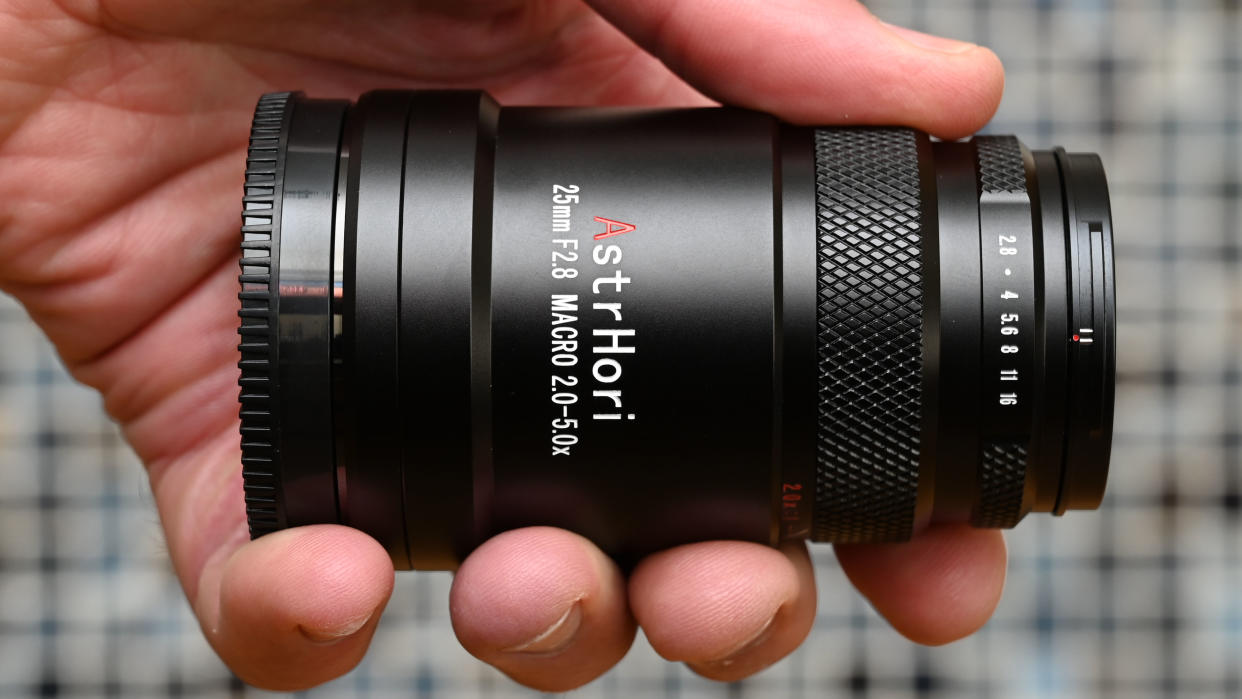
I enjoy macro photography and, even with a typical macro lens that has full 1x magnification, filling the image sensor with something little more than the size of a postage stamp enables incredible levels of enlargement when viewing the resulting images on screen or in print. This AstrHori lens gives comparatively super-sized enlargement. From one end of its focusing range to the other, it gives from 2x to 5x macro magnification, revealing the tiniest of details with an almost microscopic view. But is it one of the best macro lenses on the market? Read on and see what you think.
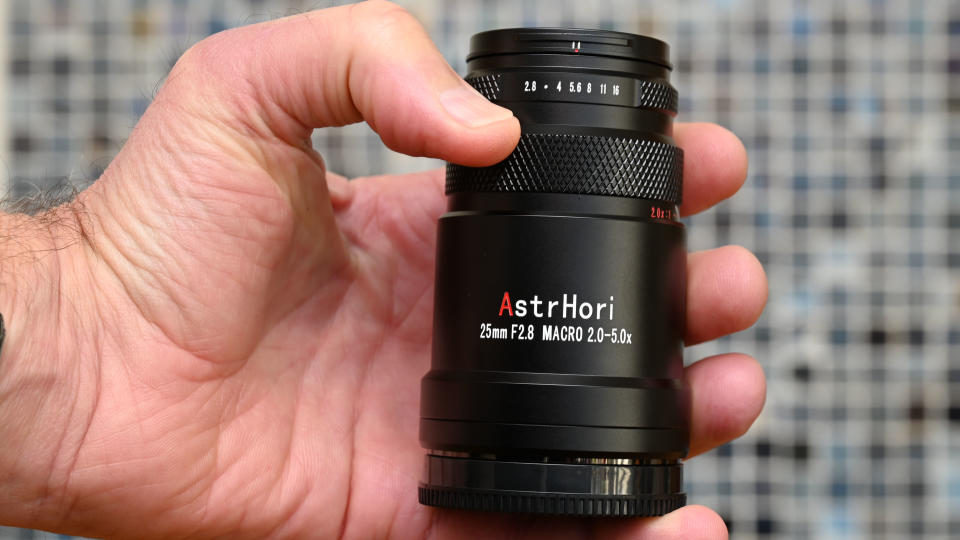
AstrHori 25mm F2.8 Macro 2.0x-5.0x: Specifications
AstrHori 25mm F2.8 Macro 2.0x-5.0x: Price & Availability
The concept of this lens isn’t entirely new. The Canon MP-E 65mm f/2.8 1-5X Macro dates back to the turn of the century, although it’s since been discontinued. Currently, there’s a similar Laowa 25mm f/2.8 2.5-5X Ultra Macro, which costs around $399/£409. The AstrHori 25mm F2.8 Macro 2.0x-5.0x is available from the company’s own website in Canon RF, Fuji X, Leica L, Nikon Z, and Sony E mount options for the relatively inexpensive price of $212/£172, at the time of writing this review.
AstrHori 25mm F2.8 Macro 2.0x-5.0x: Design & Handling
I’m used to current and recent macro lenses being dual-purpose optics. A typical 90mm to 105mm f/2.8 macro lens can focus all the way to infinity and also comes in useful for portraiture and still-life photography, as well as for shooting extreme close-ups. This AstrHori lens is a different kind of beast. The ‘focus ring’ isn’t really for focusing as such, as it sets the magnification ratio at anything between 2x and 5x magnification, and you focus by moving the camera (ideally with a macro focus rail) or by moving the object that you’re photographing. The focus distance itself, as measured from the front of the lens (just for a change) stretches from 37.5mm to 45mm as you sweep through from 2x to 5x magnification. That’s less than 2 inches at best, so you’re forced into a very close working distance.
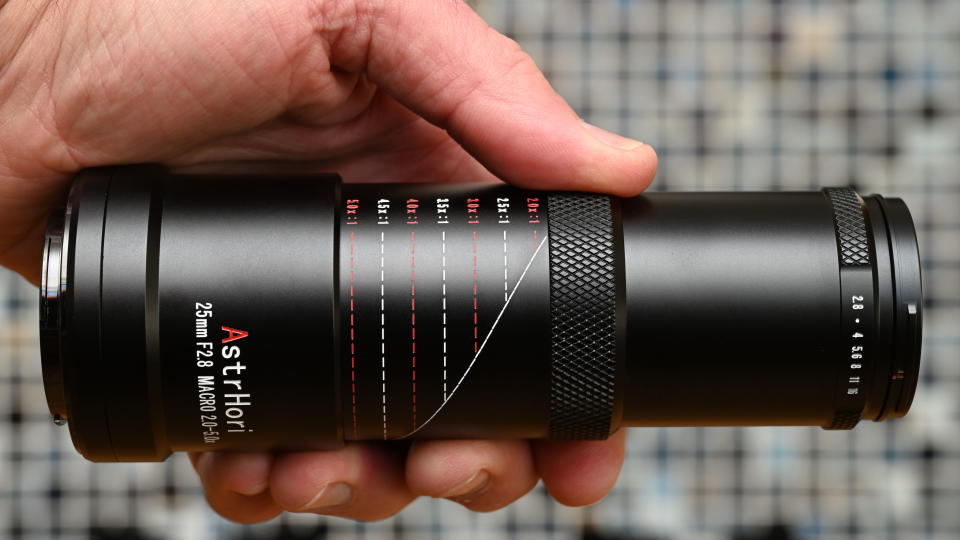
The lens is full-frame compatible, even though the Fujifilm X-mount version naturally can’t take advantage of the whole image circle, as it’s an APS-C system. I tested the E-mount version of the lens on a Sony A7 II camera body and found that accurate focusing was pretty tricky. The camera’s focus peaking option is some help but a magnified preview is unavailable. That’s because, as a fully manual lens with no electronics, the camera body doesn’t register that a lens is actually attached. Further drawbacks, apart from the lack of autofocus, are that no lens-based EXIF data is stored in image files, and the camera doesn’t know what aperture you’ve set. The aperture itself is controlled by an aperture ring, which forms the entire length of the front extending section of the lens.
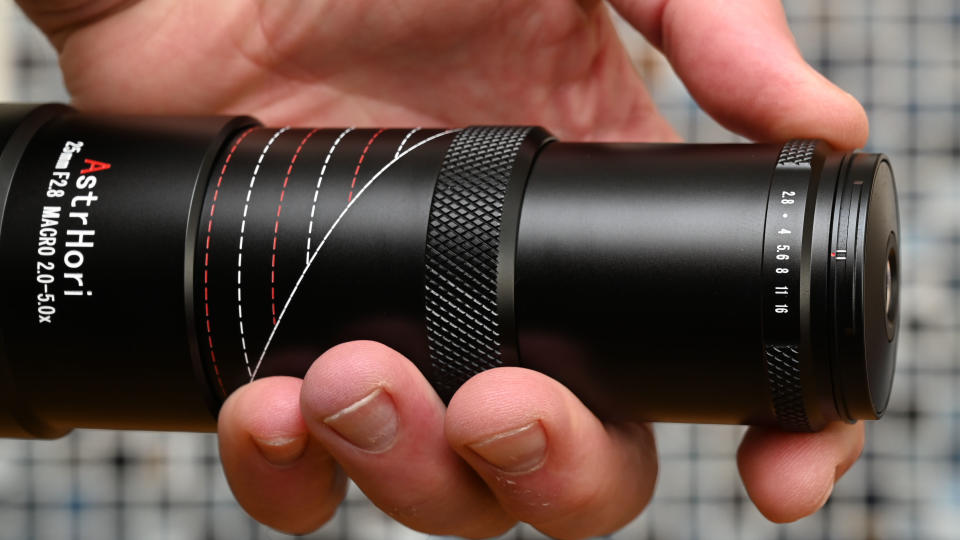
There’s a middle extending section as well as the front extending inner barrel, which forms the focus ring (or more accurately, the magnification ring). As such, there’s a lot of physical extensions as you stretch from 1x to 5x magnification. The angle of view shrinks from 20 degrees down to 9 degrees in the process. A magnification scale is printed on the middle extending barrel, shown in 0.5x increments.
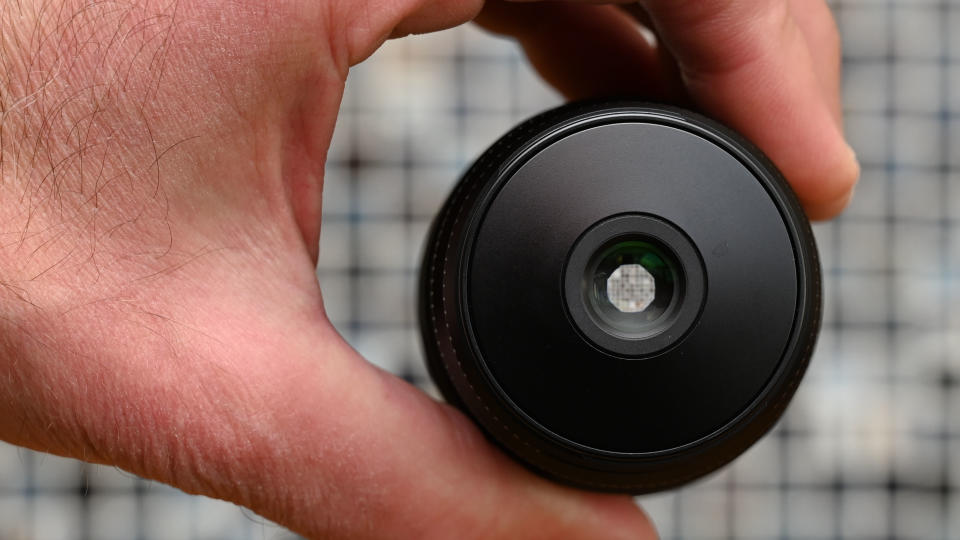
The front end of the lens has a small-diameter optical element. There’s no filter attachment thread nor a hood. The latter wouldn’t be practical, considering the very close working distance between the lens and whatever you’re shooting. However, the lens is supplied with a slip-on protective cap.
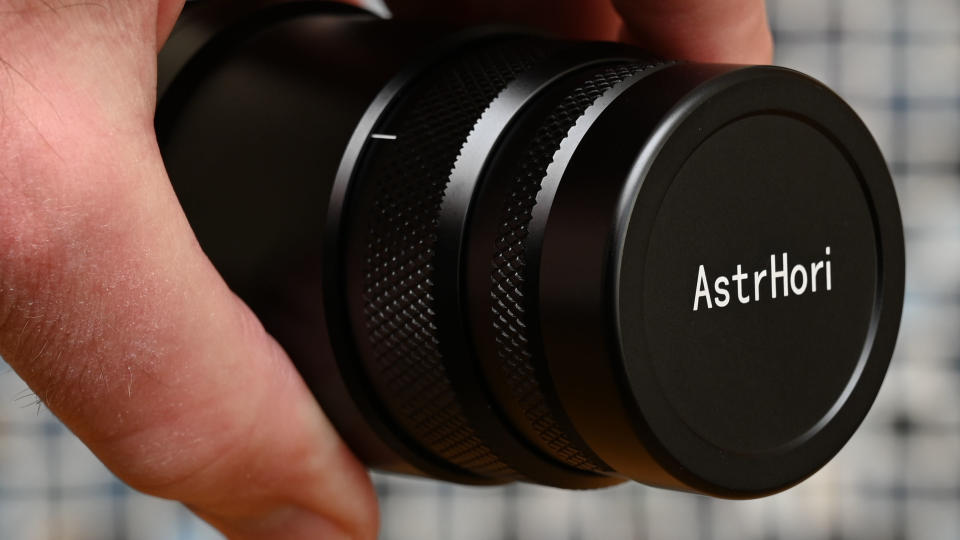
Build quality feels pretty good, especially for such an inexpensive lens, although the focus ring of my review sample felt pretty stiff. At least it operated smoothly throughout its entire range. At the rear, the lens features a sturdy metal rather than plastic mounting plate.
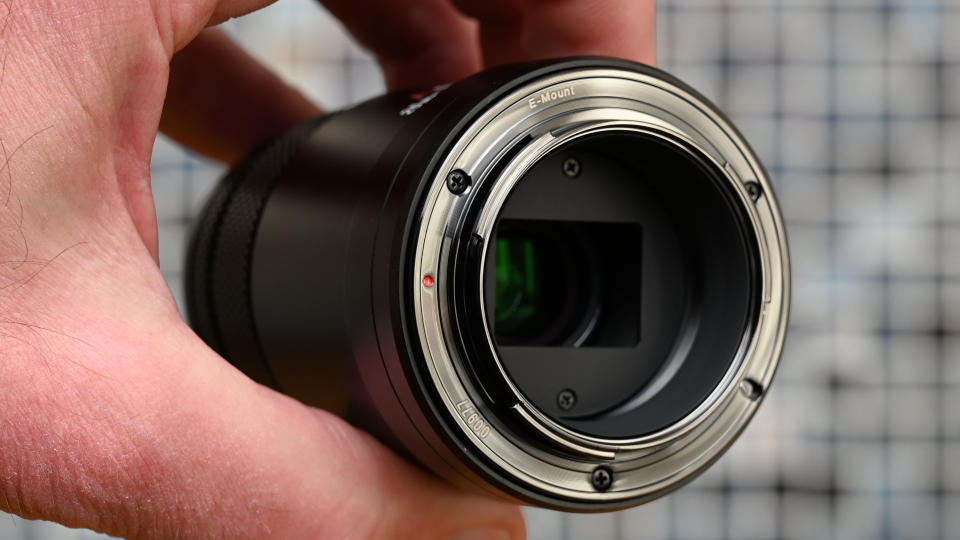
AstrHori 25mm F2.8 Macro 2.0x-5.0x: Photo Performance
Throughout my testing of the lens, I found the image quality to be a moveable feast, literally. Even at a fairly small aperture of f/11 (the lens only goes down to f/16 anyway) depth of field is incredibly tight. This demands a high degree of precision when it comes to focusing, and a macro rail really comes in handy.
When you nail the focus distance, or at least the distance between the lens and the object you’re shooting, sharpness is very good. I found that the lens can reveal near-microscopic levels of detail for areas of a subject that fall within the depth of field. You can certainly see plenty of detail that’s invisible with the naked eye.
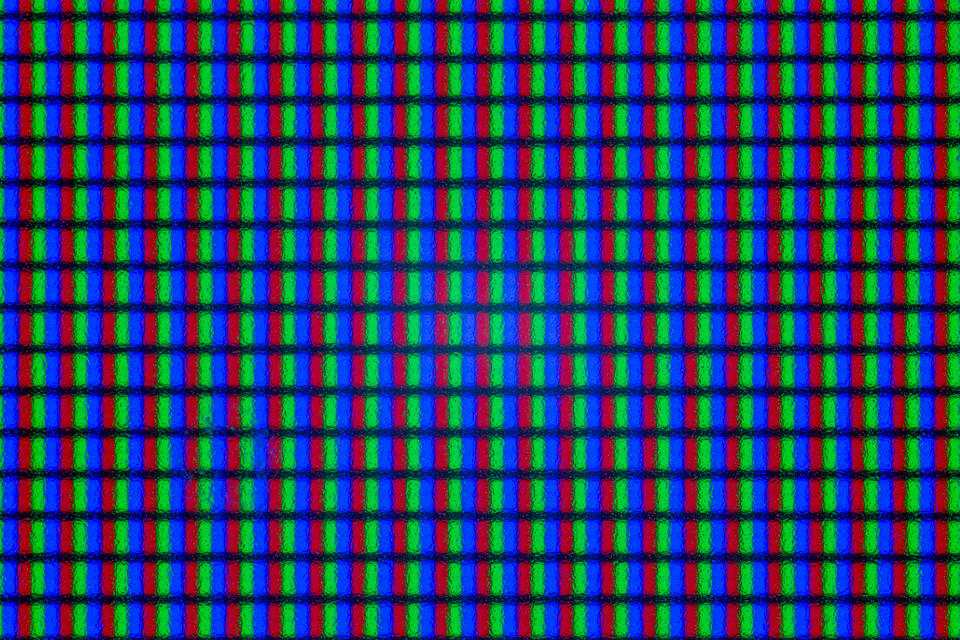
AstrHori 25mm F2.8 Macro 2.0x-5.0x: Sample Images
The example shots in this gallery were taken at f/11, using a small photographic LED lamp for illumination. They feature macro close-ups of color pencils, a small section of a wristwatch face, the inner workings of a pocket watch and the surface of a £1 UK coin.
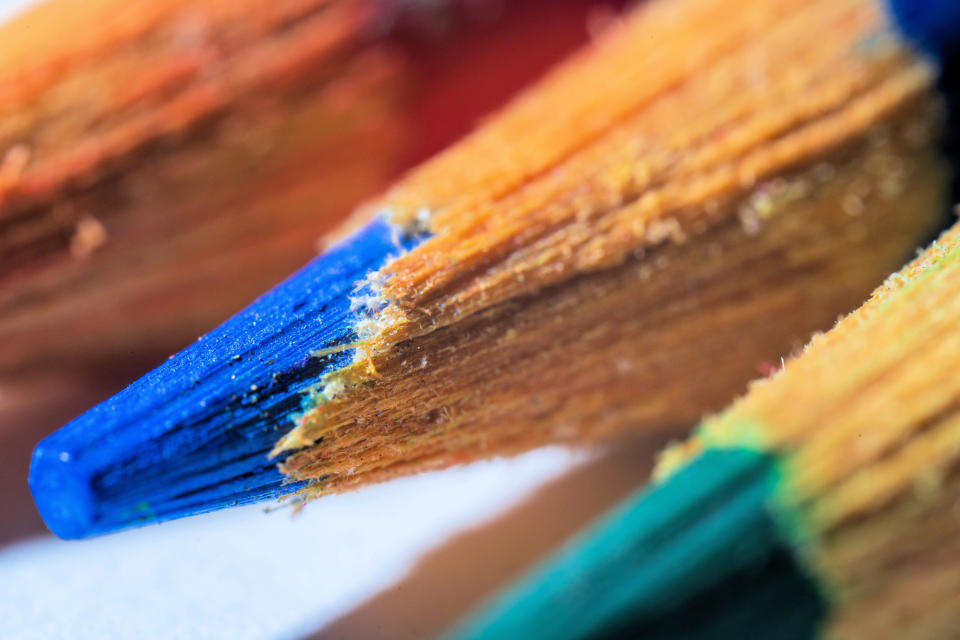
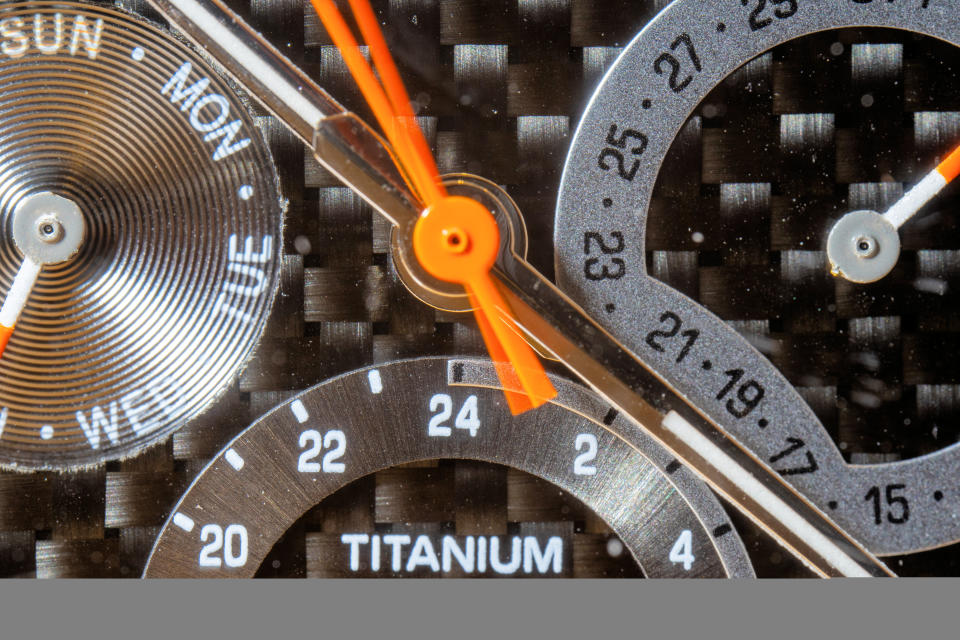
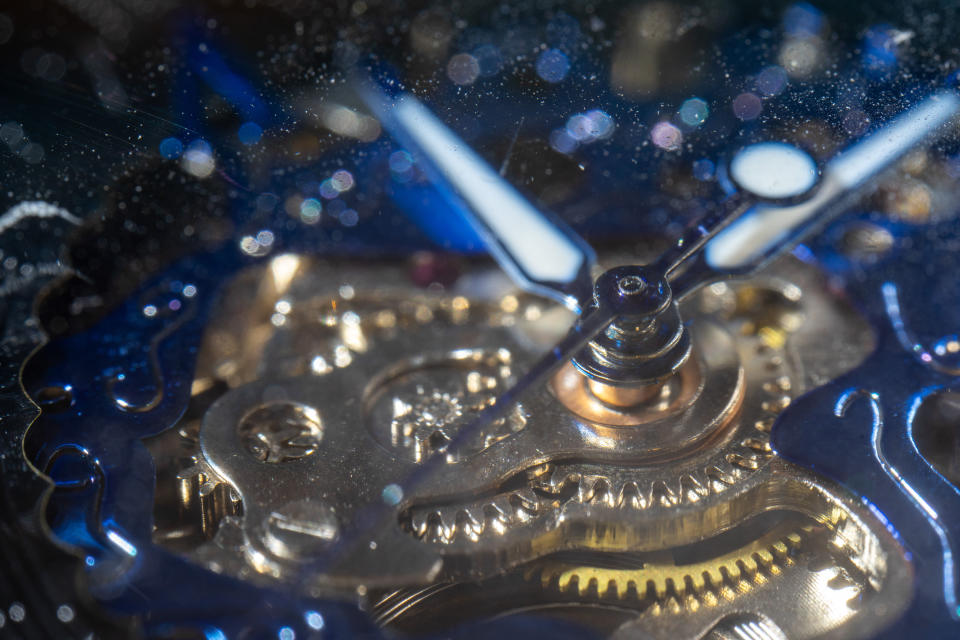
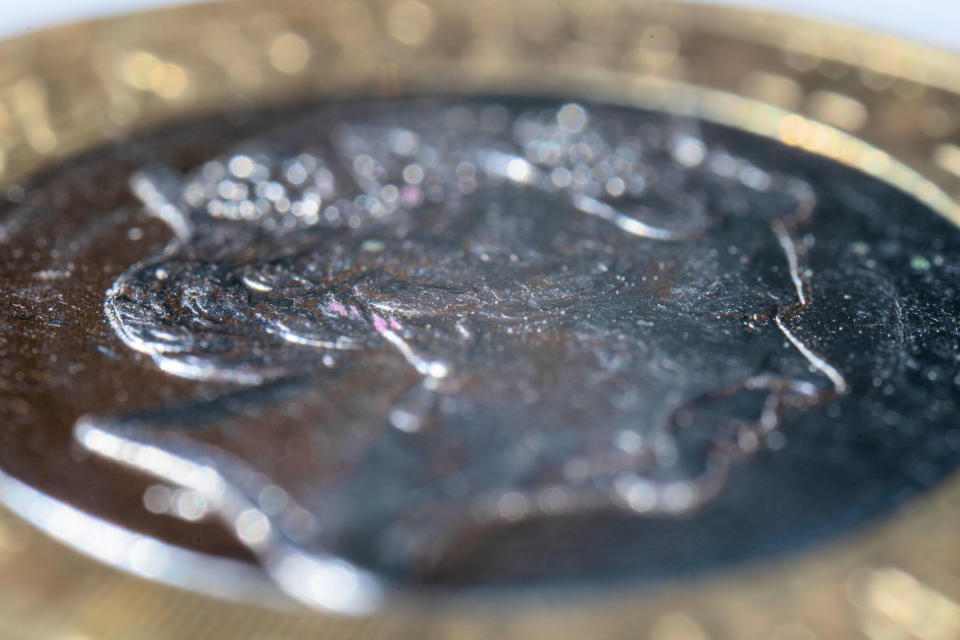
AstrHori 25mm F2.8 Macro 2.0x-5.0x: Verdict
For times when full 1x macro magnification just doesn’t cut it, this lens gives anything from 2x to 5x magnification. I like that it can reveal incredibly fine detail that I just can’t see with my naked eye or even a magnifying glass. Image quality is convincing but, ultimately, it’s a fiddly lens to use, lacks autofocus or any communication with the camera body, and only works if I can get closer than a couple of inches from a subject (measured between the front of the lens and what I’m shooting). Even so, it’s very good value for money and adds something different to my gadget bag.

Should you buy the AstrHori 25mm F2.8 Macro 2.0x-5.0x?
✅ Buy this...
Huge macro magnification
Inexpensive for a macro lens
Decent build and image quality
🚫 Don't buy this...
Can’t be used for regular shooting
No autofocus or camera communication
Fiddly and demands patience
Alternatives

The Laowa 25mm f/2.8 2.5-5X Ultra Macro is a very similar lens that’s available in Canon EF & RF, Nikon F & Z, Pentax K, L-mount and Sony E options. However, the Laowa lens is rather more expensive to buy.

Fancy something a bit different? The AstrHori 18mm f/8 2x Periscope Probe Macro gives 2x magnification and works as a long probe, ideal for spaces you can’t physically get into. It comes complete with a built in dimmable LED light and is available in Canon EF & RF, Fujifilm X, L-mount, MFT, Nikon Z and Sony E options.

